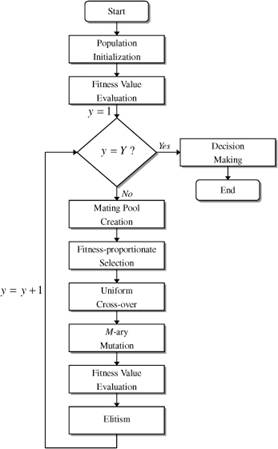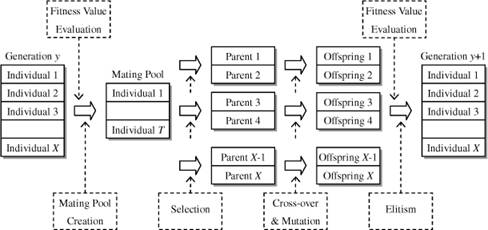Appendix A
Appendix to Chapter 5
A.1 A Brief Introduction to Genetic Algorithms
The GAs [328,453–456] were first introduced by Holland [453] during the 1960s. Since then, a growing interest in GAs has resulted in a rapid development in this area [328, 662, 663], since GAs have been shown to perform well in numerous robust global search and optimization problems, which may not be conveniently be solved by using traditional search methods.
In this section, we will briefly introduce the GAs in the context of multi-user SDMA-OFDM systems, in order to offer a better understanding of our proposed GA-based MUD of Chapter 5. Figure A.1 shows a flowchart of the GA MUD employed in our multi-user SDMA-OFDM system, while the actions of the GA-based search procedure during one generation are detailed in Figure A.2. Both of these figures will be referred to during our further discourse in this section.
Figure A.1: structure of the GA MUD used in the multi-user SDMA-OFDM system.

Figure A.2: The GA-based search procedure during one generation.

Population Initialization. At the beginning of the GA-based search, an initial population consisting of X so-called individuals is created, each representing a possible solution of the optimization problem considered, either on a random basis or with the aid ...

